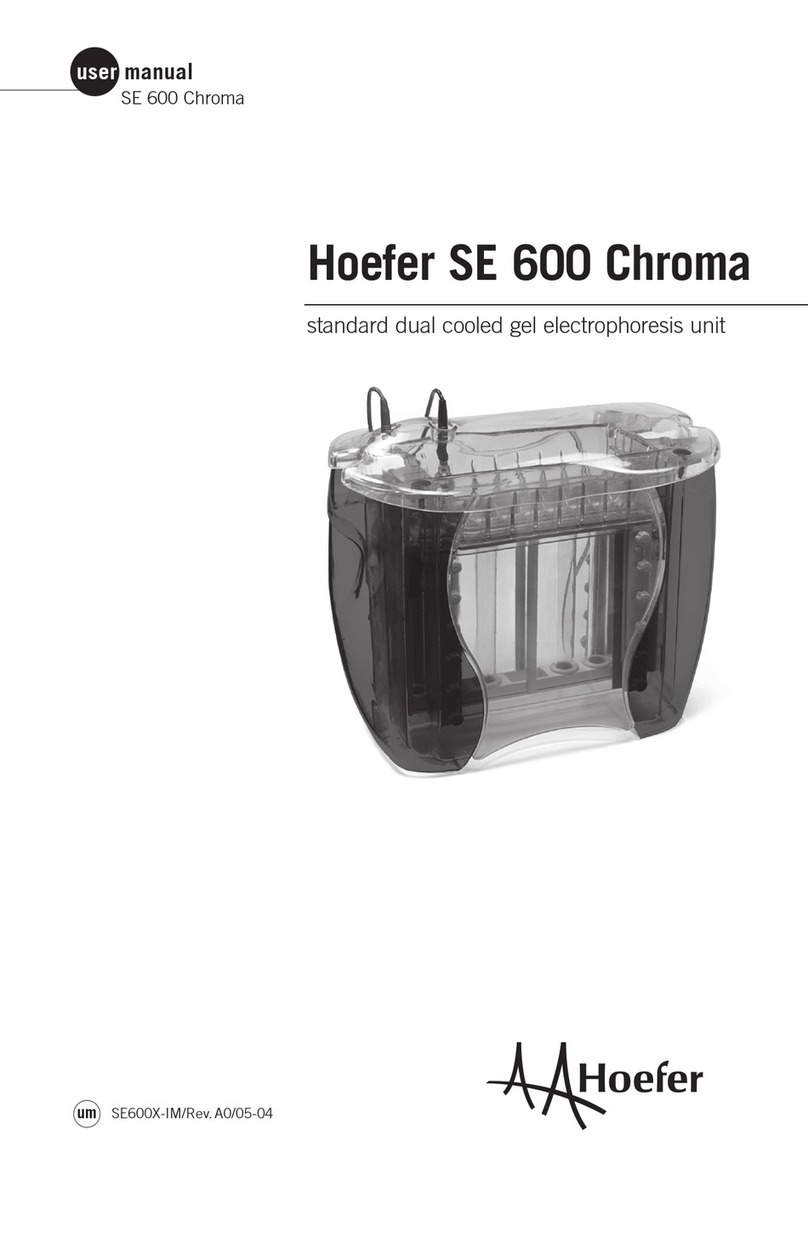
• Le couvercle de sécurité doit être en place avant
de brancher les prises au générateur.
• Eteindre le générateur et débrancher les prises
avant d’enlever le couvercle de sécurité.
• Avant la premiére utilisation, remplir le socle
avec environ 600 ml 50/50 d’éthylène glycol et
d’eau a n de ne pas endommager l’instrument.
(Voir page 4 du mode d’emploi). Le socle doit
être rempli même si le refroidissement n’est pas
• Ne pas utiliser seulement de l’eau, de l’anti-
gel commercial ou tout autre solvant organique
pour remplir le socle. L’eau augmente en volume
lorsqu’elle gêle. Du fait que l’eau est enfermée,
le socle peut se fendre. Les solvants organiques
peuvent causer des dommages chimiques
• Ne pas refroidir le socle en dessous de -20 °C
(-4 °F). Refroidir le socle dans un seau rempli de
glace ou un dans un réfrigérateur.
• Ne pas utiliser avec un gel ou un tampon à
plus de 50 °C. Eviter le surchauffement en
refroidissant le socle avant l’emploi. A n d’éviter
le surchauffement durant de longues utilisations
sous haut voltage, échanger si possible, le
socle avec un second socle déjà refroidi.Un
surchauffement peut causer des dommages
irréparables à l’instrument.
• Si l’instrument n’est pas utilisé en conformité
avec les recommandations du fabriquant, les
protections de sécurité qui équipent cet appareil
peuvent être rendues inéf caces.
• Seulement les accessoires et piéces detachées
approuvés ou fournis par Hoefer, Inc. sont
recommandés pour l’utilisation, l’entretien et
réparation de cet appareil.




























